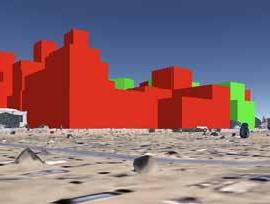
4 minute read
Over-Development of Southall
By Will French
Neighbours Paper frequently features new and unsuitable developments in Central Ealing and Acton. We’ve said far less about what’s in the pipeline for Southall. The numbers there are extraordinary.
Advertisement
Work on 3,750 new homes at the giant Gas Works site has already triggered objections from residents concerned about the harm to their health caused by the clean-up of land on which substances like tar and benzole were dumped for over 100 years. But Southall is not under assault just from the Gas Works development. The whole town is a building site in which the Southall community have to live their lives.
A walk through the centre soon reveals the horror of it. All five senses are overwhelmed. The noise and disruption of building works never stills, and neither does the traffic congestion, especially over Southall’s only railway bridge. Pneumatic drills and paving stone grinders vibrate your body, blowing up dust and debris that hangs in the air, and gets into your mouth and up your nose. When the wind blows loosely secured demolition debris rattles ominously. You fear it will become dangerously airborne if the wind strengthens even slightly. station, but blocks of flats will go up everywhere - along the Broadway, Park Avenue and around Southall Green.
You would expect there would be a plan to manage this much growth. Not in Southall, where a series of unconnected studies each contradicts the last. A 2014 GLA ‘planning framework’ foresaw new neighbourhoods designed to ‘complement existing local character’. This promised ‘a balanced and inclusive community’ … ‘regardless of age, economic status, lifestyle and level of independence.’ A mix of unit sizes and tenure types with buildings ‘predominately 4 – 8 storeys with some taller buildings to improve legibility to key locations.’ Progress in achieving this vision would be regularly reviewed.
There have been no reviews and developers have been given free rein to build what they want. Their schemes are massive. The largest is the old Middlesex Business Centre which will cram 2000 homes into 13 blocks up to 27 storeys high. like the GLA’s vision. Instead, they will mainly be in tower blocks - 51 of them over 10 storeys. EM found 89% of the consented units are two bedrooms or less, so unsuitable even for small families. And there won’t be much Southall residents could afford. Just 13.5% of the new homes will be ‘affordable’ at London Affordable Housing rents. A further 23.5% will be ‘intermediate’ homes at prices up to 80% of market rates. A full 63% of the new homes will be provided at market prices - far higher than most local people could pay.
With Covid-19 and the recent downturn in the demand for small flats who are the new homes for? Perhaps they will be purchased by long term investors. A recent Berkley Homes marketing campaign in Hong Kong hints at a possible target market.
Ealing can do so much better as the nearby Havelock Estate refurbishment proves. This worn out 1960s Council estate was transformed with low rise high density homes clustered around green space for families to enjoy. Who decided to stop building like this?
7,500 New Homes 51 Tower Blocks
www.ealingmatters.org.uk
This only pales against what’s to come. During the past 5 years further planning consent for 7,500 homes has been granted or proposed - twice the number destined for the Gas Works site. Most new building is on the old industrial and warehousing land south of the railway and west of the station, but blocks of flats will go up everywhere - along the Broadway, Park Avenue and around Southall Green.
Figures compiled by Ealing Matters reveal these new homes will be nothing like the GLA’s vision. Instead, they will mainly be in tower blocks - 51 of them over 10 storeys. EM found 89% of the consented units are two bedrooms or less, so unsuitable even for small families. And there won’t be much Southall residents could afford. Just 13.5% of the new homes will be ‘affordable’ at London Affordable Housing rents. A further 23.5% will be ‘intermediate’ homes at prices up to 80% of market rates. A full 63% of the new homes will be provided at market prices - far higher than most local people could pay.


These 2 images, from similar viewpoints at the SE corner of Hortus Cemetery compare recent construction on Merrick Road with what’s planned
With Covid-19 and the recent downturn in the demand for small flats who are the new homes for? Perhaps they will be purchased by long term investors. A recent Berkley Homes marketing campaign in Hong Kong hints at a possible target market.
Ealing can do so much better as the nearby Havelock Estate refurbishment proves. This worn out 1960s Council estate was transformed with low rise high density homes clustered around green space for families to enjoy. Who decided to stop building like this?
For more information: www.ealingmatters.org.uk








